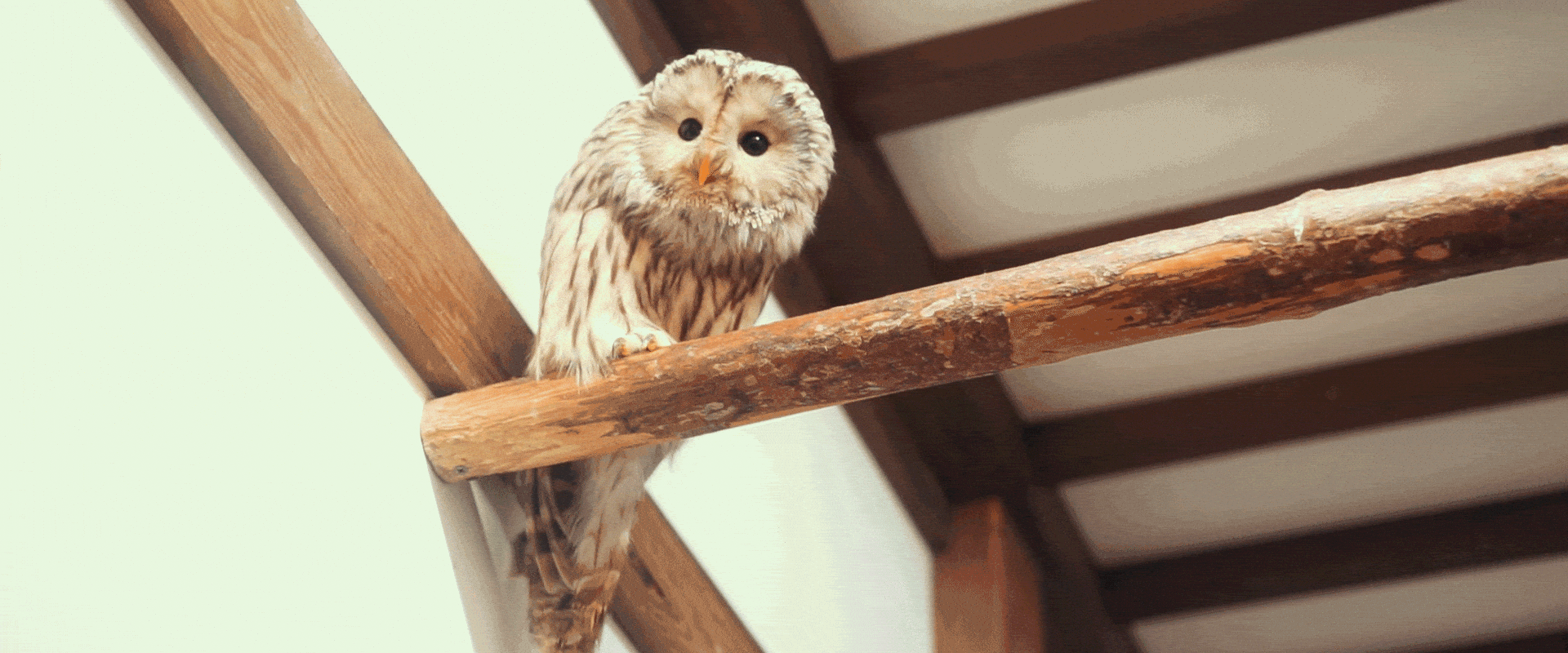




The Ural owl (Strix uralensis) is a medium-sized nocturnal owl of the genus Strix, with up to 15 subspecies found in Europe and northern Asia.
Strix uralansis -Range Map
The Ural owl is smaller than the great grey owl, and much larger than the tawny owl, which it superficially resembles. Distinguishing features apart from the size are the pale, buffish grey-brown plumage, with copious dark brown streaking on the back, back of the head and underparts. It has a round head with plain buffish-grey facial discs, orange-yellow bill and small black eyes. The tail is long and wedge-shaped, with dark barring on the uppertail, and the wings are rounded. Flight is direct and purposeful, recalling that of the common buzzard. Sexes are similar, with no seasonal variation. Length can range 50 to 61 cm (20 to 24 in) and wingspan from 110 to 134 cm (43 to 53 in). Weight in males is 500–730 g (1.10–1.61 lb) and in females is 720–1,300 g (1.59–2.87 lb).[2][3]The Ural owl has an extended distribution area in Europe and Asia, from Sakhalin, Japan and Korea in the east to Scandinavia in the west. The northern border is at approximately 65 degrees north latitude, and the southern border follows the southern delimitation of the taiga. There are relict populations in the mountains of central Europe belonging to the subspecies S. u. macroura. Birds in northeast Poland and Scandinavia belong to the subspecies S. u. liturata, and those in western Siberia to the nominate race S. u. uralensis.
The northern populations of the Ural owl occupy similar habitat to the great grey owl, nesting in lowland forests but avoiding dense areas, especially those of purely conifers. In central Europe it is an upland species, preferring deciduous woodland. It usually occupies open woodland and is more often found in moist rather than dry areas. It nests in hollow tree trunks, occasionally in old raptor nests, and increasingly in nestboxes. It normally lays two to four eggs, which hatch after 27–34 days. The young leave the nest after about four weeks, but will not fly until about six weeks old. It is a very aggressive owl, chasing other birds of prey from its territory, and it will attack human intruders, especially when young are present.
The Ural owl feeds on rodents and medium-sized to large birds such as jays and willow ptarmigan, although normally only up to the size of a woodpigeon. Its territorial call, which can carry up to two kilometres, is a soft, deep wo-ho….. woho uhwo-ho. Birds also give unmistakable yapping bau – wau calls, which are delivered by both sexes.
via Wikipedia